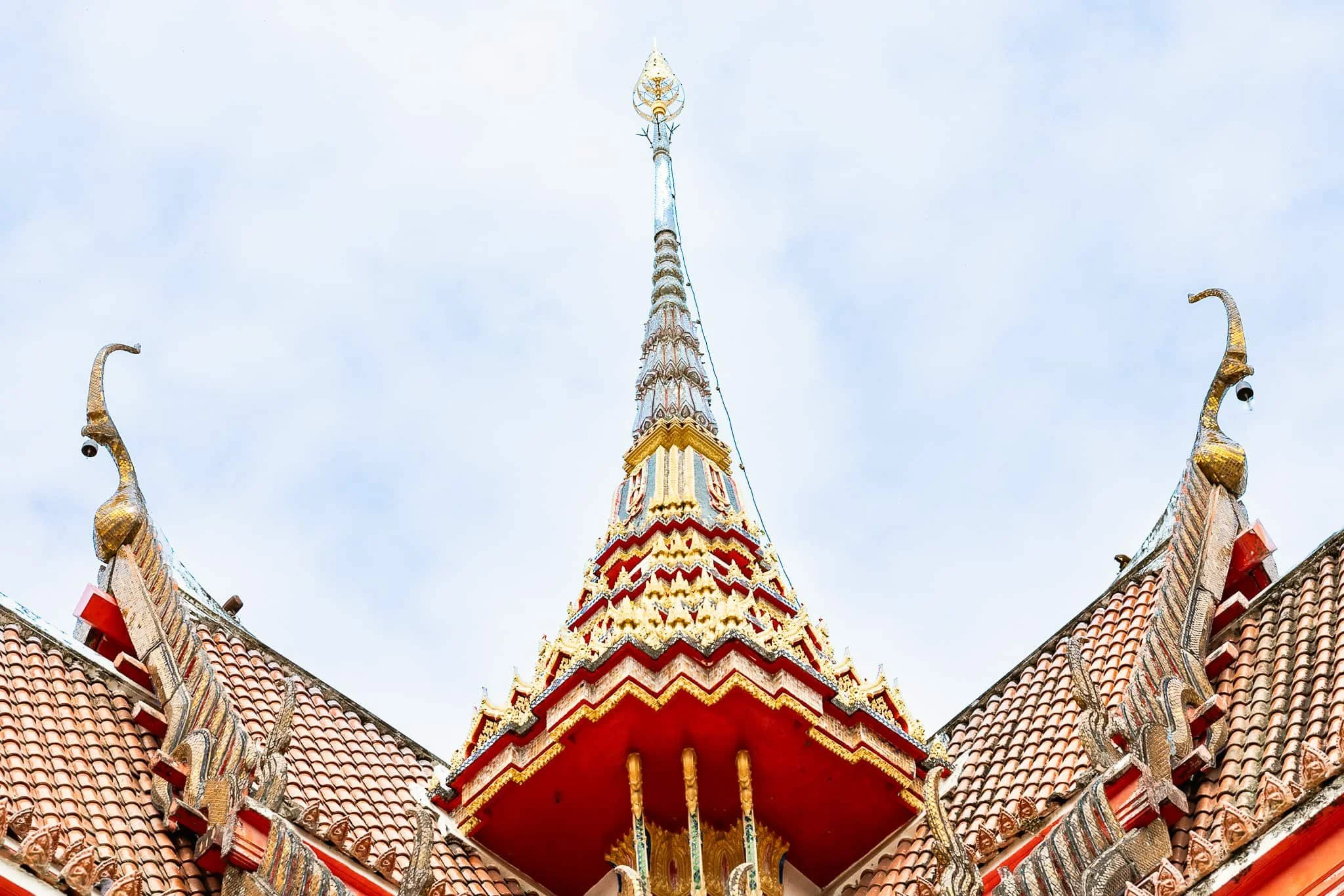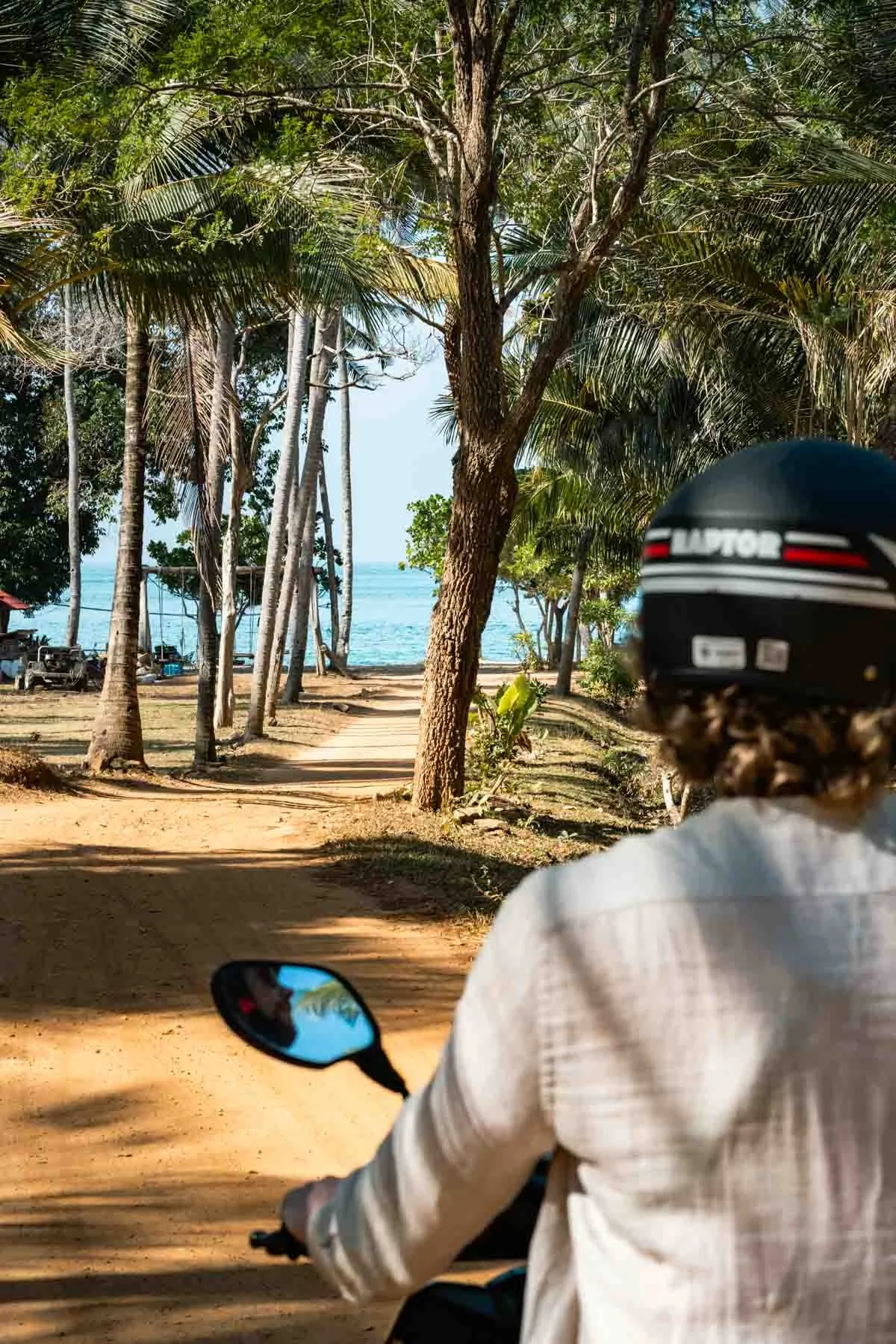Visiting a Thai Buddhist Temple: Everything you Need to Know
Thai Buddhist temples are not only stunning but also some of our absolute favorites to visit. Before stepping inside, it’s important to know what to expect and how to behave respectfully. In this post, we’re sharing our top temple picks across Thailand—plus helpful tips to make your visit truly unforgettable.DRESS CODE | Cover knees & shoulders, shoes off
BEHAVE | Quiet & Respectful
NO-GO | Point your feet at the Buddha
OUR FAVORITES |
Wat Phra Khaew, Wat Pho, Wat Arun, Wat Doi Suthep
We share a deep appreciation for Thai temples, which are stunning with their intricate details. These temples are a vital part of Thailand’s cultural, spiritual, and architectural heritage. They serve as spaces for worship, meditation, and community gatherings, and are often linked to the Theravada tradition of Buddhism, the dominant form in Thailand. Unfortunately, many temples have become popular tourist attractions, and this can sometimes lead to a lack of respect for their sacred purpose and the Buddha.
Be prepared for clothing checks, as entry to the temple may be denied if you're not dressed modestly. Even if no checks are in place, it’s important to show respect by covering your knees and shoulders.
✈︎Planning a getaway to Thailand and wondering where to begin? Start with our Thailand Travel Essentials—your go-to guide for top destinations, travel costs, packing advice, and itinerary ideas to make your trip a dream.
Rules for the Temple Conduct
DOs
Dress modestly: Cover your shoulders and knees.
Remove your shoes before entering the main prayer hall (Buddha’s Hall).
Take off your hat and sunglasses before entering.
Bow respectfully when entering the temple and in front of the Buddha statue.
Be quiet and respectful: Temples are sacred places of worship.
Stay near the back or sides if you're observing or meditating—the space directly in front of the Buddha is reserved for worshipers and monks.
Greet monks with a respectful bow: Place your palms together at your chest, raise them between your eyebrows, and lower your head.
Kneel facing the Buddha, with your toes pointing behind you. Never sit with your feet pointing toward the Buddha or others.
Always check if photography is permitted before taking photos.
DON’Ts
Don’t turn your back on Buddha statues or images.
Don’t touch monks or nuns.
Don’t smoke or drink anywhere on temple grounds.
Don’t point your feet toward Buddha images or other worshipers—this is considered highly disrespectful.
Planning your next holiday?
When you make a purchase through our links, you support us without any extra cost to you.
Your support means the world to us!
FIND HOTELS | Booking.com
FIND A RENTAL CAR | Rentalcars.com
GET TRAVEL INSURANCE | HeyMondo (get 5% off)
BOOK TOURS & ATTRACTIONS | GetYourGuide
BOOK A BUS / TRAIN / TRANSFER | 12Go
The Art of Worship: Understand a Buddhist Thai Temple
The Thai Buddhist temples have a very typical roof called chofa, and their curves symbolize the protection of the sacred space, keeping negative energies away from the temple.
When entering temples, you will see statues of nagas, a mythical serpent-like creature, often found guarding temple stairways and sacred places, symbolize protection, wisdom, and spiritual power. The nagas are revered in both Hinduism and Buddhism. Another mythical bird-like figure is Garuda, which acts as a symbol of strength, protection, and the power of good over evil. In Thai temples, Garuda often appears in murals or sculptures and is closely associated with the Thai royal family and the military.
Search for the Statues of four guardian kings, known as Chaturmaharajika, are often placed at the corners of the temple's outer walls or entrances. They are considered protectors of the Dharma (Buddhist teachings) and guardians of the faithful, ensuring that only those with pure intentions enter the sacred space.
In some temples, they have sacred trees, such as the Bodhi tree, under which the Buddha attained enlightenment. The tree symbolizes growth, knowledge, and the interconnections of all living things.
The Buddha statues in Thai temples represent the enlightened mind and the path to spiritual liberation. They represent various stages of the Buddha’s life and his teachings. You will see the Buddha in different postures, each carrying specific meanings:
Sitting Buddha: Represents meditation and enlightenment.
Standing Buddha: Symbolizes the Buddha’s teaching and readiness to help others.
Reclining Buddha: Depicts the Buddha in his final moments, symbolizing his passing into nirvana.
Calling the Earth to Witness: Represents the Buddha's enlightenment, calling upon the Earth to witness his achievement.
You will see the lotus in the temple art, such as paitings, as flowers, or the Buddha sitting on a lotus. It is one of the most important symbols in Buddhism. The flower grows in muddy waters but rises to bloom on the surface, symbolizing purity, spiritual emergence, and the potential to overcome suffering. It is also very common to have intricate murals that tell the stories of the Buddha’s life, previous lives (Jataka tales), and important Buddhist teachings.
Newsletter
Turn dreams into plans and get a monthly dose of wanderlust with our tips, guides & travel stories.
Our Favorite Temples
Wat Phra Kaew, Bangkok
The Temple of the Emerald Buddha, located in the Grand Palace, is one of Thailand’s most revered temples. The Buddha is carved from a single block of jade, enshrined in a magnificent golden chapel, and its serene presence brings a deep sense of peace and spiritual connection. The temple itself is a masterpiece of Thai architecture—its intricate details, golden accents, and murals tell the stories of the Buddha’s life and the spiritual journey.
WHERE | Google Maps
OPEN | 8:30 am to 3:30 p.m.
ENTRANCE FEE | ฿500 | €3 | US$3
Wat Pho, Bangkok
Home to the famous Reclining Buddha, it is one of the oldest and largest temples in Bangkok. Wat Pho is the birthplace of traditional Thai massage. The massive reclining Buddha statue, measuring 46 meters long and covered in gold leaf, lies peacefully, symbolizing the Buddha's final moments as he enters nirvana. Its grounds are adorned with over a thousand Buddha images, while intricately decorated chedis (stupas) rise toward the sky, their colors glowing in the sunlight.
WHERE | Google Maps
OPEN | 8:00 a.m. to 6:30 p.m.
ENTRANCE FEE | ฿300 | €3 | US$3
Wat Arun, Bangkok
Also called the Temple of Dawn, it is known for its stunning spires and it’s prime location along the Chao Phraya River. It is especially mesmerizing at sunrise and sunset when the temple's spires—covered in seashells and porcelain—glow in the golden light. Its towering central prang (spire), rising over 70 meters, represents Mount Meru, the center of the Buddhist cosmos. As you ascend the steep stairways to the top, you’re rewarded with a stunning view of the river and the city, with the golden sun casting a warm light over the horizon.
WHERE | Google Maps
OPEN | 8:00 a.m. to 6:00 p.m.
ENTRANCE FEE | ฿100 | €3 | US$3
Wat Doi Suthep, Chiang Mai
Situated on a mountain overlooking Chiang Mai, this temple offers spectacular views and is a significant pilgrimage site. The temple’s golden chedi shines in the sunlight, said to contain relics of the Buddha, and its surroundings are filled with fragrant incense, soft prayers, and the gentle rustling of the wind through the trees.
WHERE | Google Maps
OPEN | 6:00 a.m. to 8:00 p.m.
ENTRANCE FEE | ฿30 | €1 | US$1














